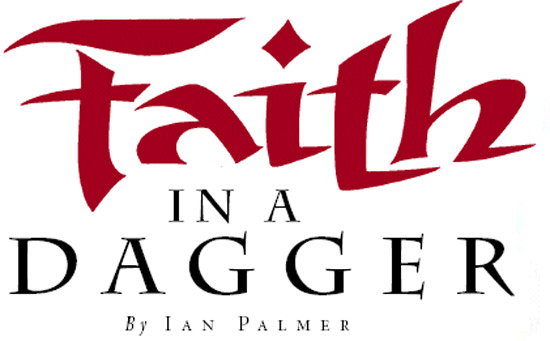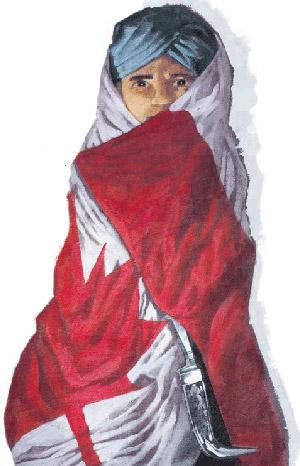Faith In A Dagger
Ian Palmer November/December 2003
Getting your Trinity Audio player ready...

Illustration By Sally Wern Comport

Though he had previously been described as a pleasant child by his principal, Gurbaj Singh's reputation plummeted after his kirpan fell to the ground as he played on school grounds. A parent—understandably skittish, given recent high-profile incidents of school violence—subsequently reported the incident. While it was considering its options, the school board paid to have a tutor home-school Singh, but when it agreed to uphold its zero-tolerance policy, it ended the home-school arrangement. Then a spokesperson for the board reportedly demanded that Gurbaj Singh return to school without the kirpan or, if it was discovered that he was not receiving any schooling, risk having child-protection officials called in.
Gurbaj Singh and his family argued that the kirpan—in addition to long hair and a small comb—is a symbol of faith required of all Sikhs. The Singh family's lawyer, Julius Grey, therefore filed a motion in the Quebec Superior Court to have the school's decision overturned on the grounds that it violated his client's religious freedom. Grey argued that the family had expressed a willingness to compromise by wrapping the kirpan in cloth and double-stitching it to make it difficult to remove. But the school board had balked at the suggestion and had suggested that the young Sikh wear either a plastic replica or a pendant symbolizing the kirpan. The family had frowned upon both suggestions. The judge presiding over the case eventually ruled that Gurbaj Singh could wear his kirpan at school, providing it was concealed under his clothing and was encased in a wooden sheath.
No sooner had the court rendered its decision than Quebec's justice minister announced that the provincial government planned to appeal the verdict. Currently under way, the appeal process will likely not be decided for some time.
Though no one ever proposed that it is easy to properly establish when one's personal rights should overrule established guidelines, many experts have expressed support for Gurbaj Singh, given the deep religious significance the kirpan holds for Sikhs. But some experts have ventured further, arguing that the outcome of the case could ultimately have implications for religious liberties across Canada, especially given the increased emphasis on national security, as opposed to individual liberties, in the aftermath of September 11.
"Religious intolerance could be one of the elements," says Manjit Singh (no relation to Gurbaj), director of the Canadian Sikh Council, in theorizing why the confrontation has gone this far. He adds that the Party Quebecois government probably wants to use the Gurbaj Singh case as a rallying point to bolster its sagging fortunes in public opinion polls. "One of the arguments given, particularly by parents, is that they have no problem with us practicing our religion but don't want us to practice in public. I say, 'nonsense.' Because the majority of parents are from mainstream society, they only teach Catholicism and Protestantism. As they say, you can fool some of the people some of the time, but you can't fool all of the people all of the time." Manjit Singh added that two other Canadian jurisdictions (Ontario and British Columbia)—not to mention the United States and the United Kingdom—have already ruled that Sikhs can wear their kirpans, with some conditions.

Most would agree with Manjit Singh's conclusion, but there are some who have questioned whether the Gurbaj Singh case has anything to do with religious liberty. Stuart Auty, president of the Canadian Safe School Network, has suggested that the debate over kirpans has little to do with school safety, because kirpans have thus far not been a problem. "It's an inexact science," said Auty. "Kirpans, to my knowledge, have never been used in a violent way as a weapon. There are much bigger fish to fry."
David Birnbaum, the executive director of the Canadian Jewish Congress, Quebec region, acknowledged that kirpans have not historically been used in a violent way, but he refused to go as far as to accuse the Quebec government of being driven by insidious motives. Nonetheless, Birnbaum said he and others from his organization are closely watching the Gurbaj Singh case. "In Quebec, like everywhere else, one has to be constantly vigilant to protect human rights, minority rights, and religious rights," said Birnbaum. "September 11 has had an impact on how people balance rights to freedom with rights to security. Our organization is watching closely from the perspective that there are instances in Canada, the United States, and Europe over the past few months where there have been increases in anti-Semitism." Birnbaum added that, while the government was faced with the task of balancing the rights of society and the need for security, people from all walks of life should be aware of the trickle-down ramifications the Gurbaj Singh case could have on other groups in society.
Eric Beresford, a consultant for ethics and interfaith relations for the Anglican Church of Canada, has followed the case and has also expressed his hope that Sikhs be allowed to practice their faith just as people of other faiths should be able to practice theirs. Much like Birnbaum, he added that what happens in the Gurbaj Singh case should be of interest to the greater society. "It's important to protect individual and community rights," said Beresford. "To fundamentally undermine the appropriate dress code of an adult male in the Sikh community can be problematic. One of the problems is xenophobia following September 11. Those beliefs have been justified by the widespread suspension of civil liberties."
The Sikh faith is the fifth-largest in the world—with more than 20 million adherents—but it is still quite small compared to the more than 2 billion members of the Christian faith. While mainstream religions in Canada may not be as susceptible in the immediate future to the abuses experienced by followers of the Sikh faith, Beresford said it would be foolish to assume that mainstream religions are immune to such infringements. "In a world in which religion is seen as a source of division and a potential source of violence, one can see how society could go for the easy option of limiting a wide range of religious liberties. Part of being an Anglican is being part of civil society. Already, there is some evidence to show how that could be rendered more difficult given the government's response to September 11."

______________________
Ian Palmer is a freelance writer living in Toronto, Ontario, Canada.